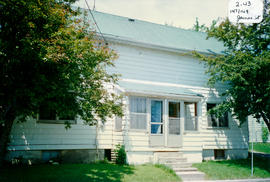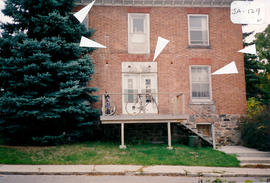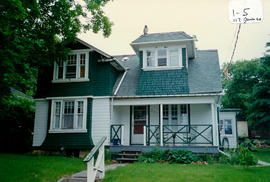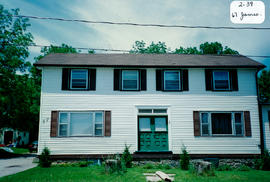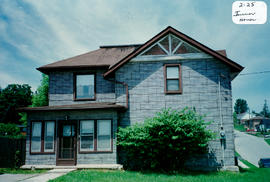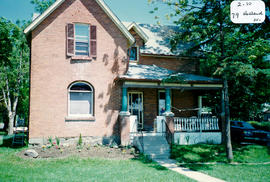- CA BWGPL GJ-HB-2017-03-12-05
- Unidad documental simple
- 1996
Parte deGeorge Jackson fonds
Construction of the house located mid-block at 129 Barrie St. (and six others) was begun in 1912 by Lieutenant George Stoddart. When Stoddart went overseas during WWI, the project was completed by builder Art Saint. This house was built in the Edwardian Classicism style. Mr. Moore, who ran a store on the north side of Holland St., moved to this house from John Street. It was eventually bought and sold in the 1990’s by Murray Quinn and family.
The two-storey house has a bell-cast, hip roof. A square plan and simple form are highlighted with a large, classically-inspired porch. The hip roof on the entrance porch is supported by painted wooden columns and simple, rounded bracket supports. Simple, double-hung windows are balanced within the façade. The dormer window mimics the roof line of the main house. Construction is solid, smooth brick with simple details. According to the 2000 inventory, the screening (added later to enclose the porch) does not detract from the building’s appearance. It also notes that the house is well-maintained. (1, 2, 3)
Sin título


